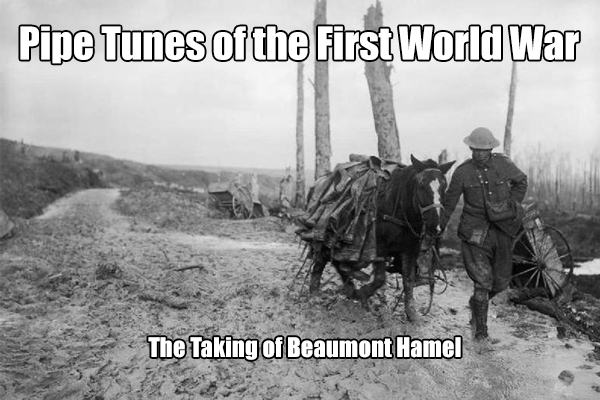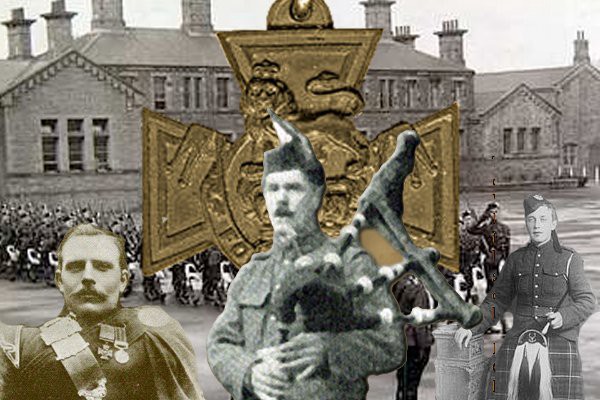Bagpipes and the United States Military

From its origin in Scottish clans and culture, the Great Highland Bagpipe has long been associated with the military.
Especially in more recent history, the Highland Regiments of the British Armed Forces, and some of the Lowland Regiments as well, have had bagpipers since their first formation.
The United States Armed Forces has historically had a very close relationship with the British – so the spread of the bagpipes was inevitable.
Bagpipes have been a part of the military forces in the United States long before there was even a United States.
During the French and Indian War (known overseas as the Seven Years War) the 42nd Regiment of Foot, the Black Watch, served with distinction in New York State and along the frontier of the Ohio Territory.
The Black Watch did not have a Pipe Band at this time – almost no military unit did, though there are records of at least one piper in the ranks. This piper was a personal assistant, or valet, to one of the officers and was listed in the official army roles as a drummer. This was generally believed to be commonly done at the time.
At the end of the war, many members of the 42nd stayed on in the Americas, having been awarded land grants.
The early to mid 1700s also saw a large influx of Scottish immigrants to the Americas, mainly because of the 1715 and 1745 rebellions. There was also the belief among many in the highlands that there was a better opportunity for advancement in the new world. The Scots congregated in upstate New York and the back country of the Carolinas.
The American Revolution saw more pipers in the Americas. Along with a return of the 42nd Regiment, there was also the 71st, 74th, and 76th regiments, all Highland regiments. These regiments were sure to have had bagpipers in their ranks but there is no definitive documentation of this.
The revolution also caused the formation of several home grown regiments. A Highland regiment formed in Canada, the 84th Regiment of Foot (Royal Highland Emigrants). This regiment was made up ex-members of the 42nd from the French and Indian War as well as local Scots settlers. This regiment was raised to fight the encroachment of revolutionaries from the colonies and later saw service along the Ohio frontier.
At least 3 loyalist Highland Regiments formed from residents of the colonies. In the Carolinas, there was the North Carolina Highland Regiment. A group also formed that eventually joined the Royal Highland Emigrants. Another regiment formed in the Carolinas was Martin’s Highland Regiment. All of these regiments were patterned on the 42nd Highlanders, with some former members in the ranks. It would be safe to assume that they might have also had pipers. Towards the end of the war these regiments were sent to join the main British force in New York and eventually disbanded in Canada.
There is evidence of at least one Highland battalion that fought for independence. Several regiments and battalions who fought in the war of independence lined the route to the capital building during George Washington’s inauguration parade in New York City. One of these battalions was described as being in traditional highland attire complete with kilts and bagpipers. It can be inferred that this battalion had fought in the war.
During the War of 1812 there are no records of American military units with pipers. The 93rd Regiment of Foot, the Sutherland Highlanders, fought against Andrew Jackson during the battle of New Orleans. Although they lost, they fought with distinction. There were pipers in the regiment but it is unclear if they took part in the battle.
The Battle of the Alamo, the defining battle of the Texas revolution prominently featured a bagpiper. Although not part of the United States at the time it is considered part of the history of the American military.
John McGregor, either a Scottish emigrant or the son of one, is known as the Piper of the Alamo. He kind of pops up out of nowhere in Nacogdoches, Texas. He fought and died at the Alamo. The stories say that McGregor and Davey Crockett, who played the fiddle, would have musical duals to raise the moral of the troops.
Civil War Era
The Civil War saw the first recorded instance of bagpipers as part of a US military unit.
Up to that time, as discussed in Part I, Highland Regiments were mainly formed of Scots settlers and soldiers fighting for the British. Reports of pipers in the ranks are few, but we can infer that they must have been serving in the ranks of these regiments in some capacity.
The 79th New York Regiment, a volunteer unit, was patterned after British Highland regiments, and in their muster parade many members wore kilts. There is also a photo of the 79th on parade that seems to show pipers in the front ranks. There were several other Scots volunteer regiments but there is no evidence of any pipers joining the troops in battle.
In the years following the Civil War, use of bagpipers in US forces dwindled as the US begins moving in its own military direction. It wasn't until the bravery and sacrifice of pipers in the Highland Regiments of World War I showed how bagpipes could still be a part of military forces. World War II cemented this idea and an explosion of US Military Pipe bands occurred in the years that followed.
In 1942, a little more than 40 Marines were stationed at the Naval Operations Center in Derry, Ireland. They formed a pipe band after accepting a challenge that Marines could not play bagpipes.
In 1948, General Mark Clark created the 6th Army Pipe Band. The band first performed on Armed Forces Day, May 20, 1950. The band was said to have traveled over 80,000 miles a year until it was disbanded in 1959.
The 8th Infantry Division created a pipe band towards the end of WWII which lasted a few years. When that band disbanded, the bagpipes, drums, and Royal Stewart kilts were sent to Military College of South Carolina (The Citadel). General Clark was the superintendent of the school at the time. The Regimental Band and Pipes formed at the Citadel in 1955 and continues to this day.
The US Air Force Pipe Band was formed by Colonel George S. Howard in 1950. Originally attached to the USAF Drum and Bugle Corp, it later became a stand alone unit. While many people remember the Black Watch playing the John F. Kennedys funeral procession, the USAF Pipe Band played in the procession and during the interment. The band disbanded in 1970.
Other bands that existed between 1950 and 1970 include; a pipe band attached to the 2nd Infantry Division, the ADA Pipes and Drums attached to the 62nd Army Band, the 7th Cavalry Pipe Band, the 9th Regiment of the New York State Guard had the 9th Regiment Pipe Band, and others.
Bagpipe bands have been formed at several military academies as well, many of these bands are still active today. The US Naval Academy and West Point both have pipe bands formed from cadets. Along with the Citadel band, the Virginia Military Institute and several other academies not directly related to the US all have active pipe bands.
Currently there are two official pipe bands attached to the armed forces: the U.S. Air Force Reserve Pipe Band and the U.S. Coast Guard Pipe Band.
From its origin in Scotland, the Great Highland Bagpipe has become a fixture of military tradition here in the United States.
Military bagpipers were active on this continent in the earliest years before our country was formed and they continue today as part of a long lived tradition.






Responses